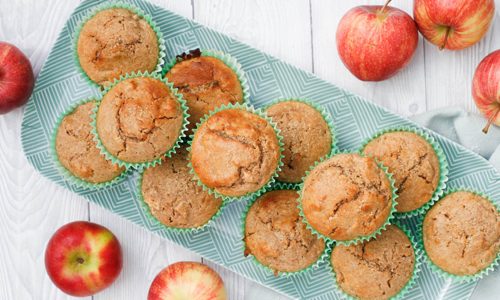Babies are finicky eaters. Mealtime always becomes a battleground for parents as the babies reject certain foods leaving them puzzled about what food they like to eat. So, it is often challenging to introduce nutritional foods into their diet. As babies often concentrate on playing and picking objects around them, baby-led weaning follows this concept. Spreading foods around babies will trigger them to pick and eat on their own rather than force-feeding.
What is baby-led weaning
Baby-led weaning is nothing but allowing the babies to eat on their own by placing a variety of foods before them. It allows them to choose and decide how much to eat. Although initially they play with the food, soon they grab and eat on their own. It also triggers their excitement to try new foods.
Benefits of Baby-Led Weaning
Babies can make their place messier with food but there are many potential benefits of baby-led weaning. Some of them are listed below:
- It improves independence and the baby’s motor skill development.
- It promotes healthy eating behaviors and allows them to eat according to their hunger.
- It exposes the baby to a variety of colors, textures, and flavors. It helps the babies distinguish colors and makes them feel the food’s texture using their hands. It also promotes their sense of smell.
- It saves a lot of time spent by parents in force-feeding their babies.
- Other benefits include supporting chewing and swallowing skills, increased hand-eye coordination, and instilling healthy eating habits.
When and How to Start?
For most 6-month-old babies, except premature or babies with eating difficulties, the digestive tract, immune system, and oral motor skills are developed well enough to manage solid foods. If your baby shows the following signs, it is ready for BLW.
- The baby sits up without support and has good head control
- It grasps food in its hands and takes it to its mouth
- Absence of tongue thrust
- The baby opens its mouth and leans forward when food is brought
- The baby tries to chew food, moves to the back of the mouth, and swallows
Here are a few tips on how to start your first BLW meal.
- When starting BLW for your babies, provide food only after milk feeding so that they will not feel hungry and have plenty of time to observe and enjoy their food.
- Cut the food into strips that allow your baby to hold them in their fist and gnaw on.
- The texture of the food should be in such a way that the baby can easily chew with its gums.
- The temperature of the food must be either cool or warm but not hot because the baby’s mouth and hands are very sensitive to handle the heat.
Best Baby-Led Weaning Foods
Up until nine months, every food should be served in portions the size of your middle and index fingers.
Finger Foods for Babies
- Sticks of soft-cooked veggies, such as zucchini, broccoli, carrots, beans, lentils, or sweet potatoes
- Fruits, such as muskmelons, avocados, bananas, strawberries, oranges, mangoes
- Scrambled eggs, omelet
- Strips of steak
- Chunks of fish or tender chicken
- Home-made yogurt
- Rice
- Pasta
Foods to Avoid
- Sugar, salt, honey, and cow’s milk
- Purees
- Saturated fat
- Whole, round, or hard foods
- Cerelac, biscuits
- Undercooked eggs or meat
- Juice
Gagging and Choking

Choking is the main concern of parents who are trying to start BLW. Kindly follow these simple tips to prevent your baby from choking.
- No screentime while eating
- Always stay next to your kid and never leave them unattended
- Eat along with your kid as babies observe and imitate your actions
- Babies will not eat at first. They take time to eat and some even throw food. So be patient and do not force feed.
It is important to understand the difference between choking and gagging. Gagging is a natural response that occurs when the baby’s mouth is full. It involves spluttering, coughing, and spitting food out. Their eyes may water. Watch your baby closely to find whether they are simply gagging, and able to move air and food around, or if they are truly choking and there is no passage of air. When your baby is choking, it is unable to cry, cough, or gasp. They make no or odd noise. In this case, you must immediately do back blows or chest thrusts to dislodge the blockage. During regular check-ups with your pediatrician, ask them for suggestions on what you must do if your baby chokes in the future.
Easy Baby-led Weaning Recipes
Breakfast – Muffins

- Soak oats and raisins overnight and drain them the next morning.
- Chop apples into small pieces and boil/bake them.
- In a large bowl, mix the soaked oats, raisins, ½ teaspoon of nutmeg, 1 teaspoon of cinnamon, boiled apple, 2 eggs, and milk. (Finely ground sunflower seeds and milled chia seeds are optional).
- Put the mixture into an oiled mini muffin tray and bake until it turns golden brown.
- Serve with a tiny drizzle of maple syrup.
Lunch – Sweet Potato and Carrot Bites

- Take a large bowl and mix mashed sweet potato, mashed carrot, finely chopped rosemary, 1 egg, 3 tbsp yogurt, finely chopped or grated garlic, 1/2 cup oat flour, and 3 tbsp olive oil.
- Put a little extra oat flour on a plate and divide the mixture using a tablespoon. This prevents them from getting sticky.
- Place the balls into the frying pan and cook until golden.
- It is ready to serve now with any sauce of your choice.
Parents’ Opinion on Baby-Led Weaning Approach
“One of the best decisions we make for our kid is to wean her baby-led. She consumes a wide variety of foods and is an excellent eater. People were always surprised to witness a 7-month-old eating on her own in a restaurant.” – Elizabeth
“We started baby-led weaning for our little guy when he was 6 months old, We were really nervous at first worrying about choking, but in the four months we’ve been doing this, he hasn’t choked once! My son will eat anything that I put in front of him and is so excited to try new foods.” – Sandra
“I love baby-led weaning because it has freed up a lot of time for me. (I don’t have to sit and spoon-feed at every meal.) And it allowed my son to be independent in choosing and eating food.” – Carol
Dear readers, you may also share your thoughts on baby-led weaning in the comments section.
Baby-Led Weaning: In a Nutshell
Introducing solid foods to their little ones is really a challenging task for every parent. Baby-led weaning offers a unique approach, placing foods in the hands of babies as they explore tastes, textures, and colors on their own. Through this method, infants not only develop motor skills but also cultivate a healthy relationship with food. Hence baby-led weaning is undoubtedly a transformative experience for families who struggle to find better ways to make their kids eat solid foods.















